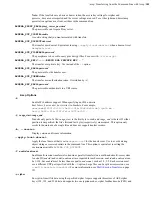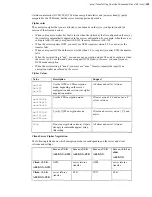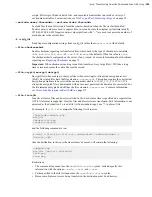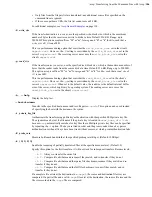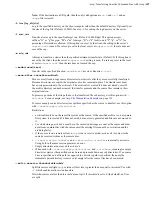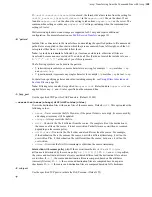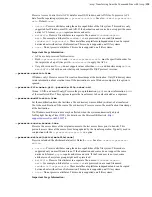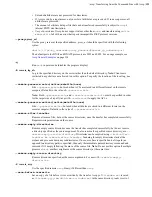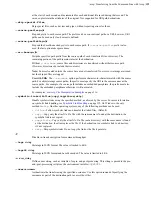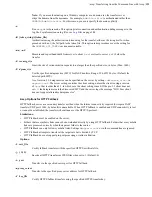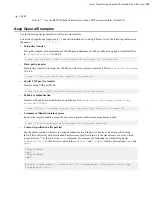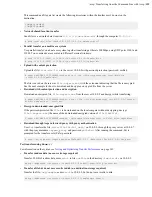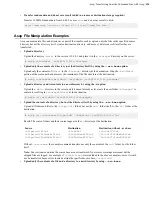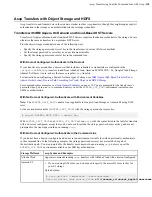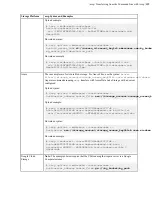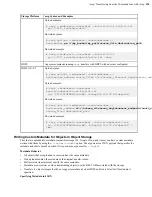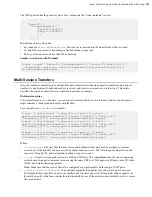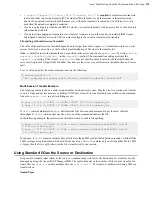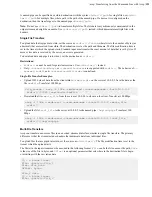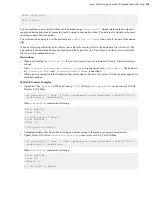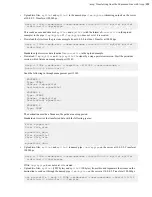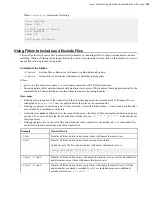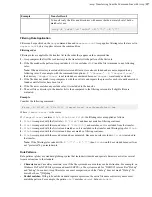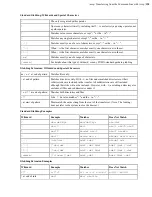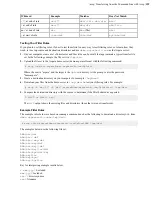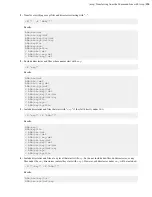
| ascp: Transferring from the Command Line with Ascp |
115
This command and file pair list create the following directories within the transfer user's docroot on the
destination:
/tmp1/folder1
/tmp2/folder2
•
Network shared location transfer
Send files to a network shares location
\\1.2.3.4\nw-share-dir
, through the computer
10.0.0.2
:
# ascp local-dir/files [email protected]:"//1.2.3.4/nw-share-dir/"
•
Parallel transfer on a multi-core system
Use parallel transfer on a dual-core system, together transferring at the rate 200Mbps, using UDP ports 33001 and
33002. Two commands are executed in different Terminal windows:
# ascp -C 1:2 -O 33001 -l 100m /file [email protected]:/remote-dir &
# ascp -C 2:2 -O 33002 -l 100m /file [email protected]:/remote-dir
•
Upload with content protection
Upload the file
local-dir/file
to the server 10.0.0.2 with password protection (password: secRet):
# export ASPERA_SCP_FILEPASS=secRet ascp -l 10m --file-crypt=encrypt local-dir/file
[email protected]:/remote-dir/
The file is saved on the server as
file.aspera-env
, with the extension indicating that the file is encrypted.
See the next example for how to download and decrypt an encrypted file from the server.
•
Download with content protection and decryption
Download an encrypted file,
file.aspera-env
, from the server 10.0.0.2 and decrypt while transferring:
# export ASPERA_SCP_FILEPASS=secRet; ascp -l 10m --file-crypt=decrypt [email protected]:/remote-
dir/file.aspera-env /local-dir
•
Decrypt a downloaded, encrypted file
If the password-protected file
file1
is downloaded on the local computer without decrypting, decrypt
file1.aspera-env
(the name of the downloaded/encrypted version of
file1
) to
file1
:
$ export ASPERA_SCP_FILEPASS=secRet; /opt/aspera/bin/asunprotect -o file1 file1.aspera-env
•
Download through Aspera forward proxy with proxy authentication
User
Pat
transfers the file
/data/file1
to
/Pat_data/
on 10.0.0.2, through the proxy server at 10.0.0.7
with the proxy username
aspera_proxy
and password
pa33w0rd
. After running the command, Pat is
prompted for the transfer user's (Pat's) password.
# ascp --proxy dnats://aspera_proxy:[email protected] /data/file1 [email protected]:/Pat_data/
Test transfers using
faux://
For information on the syntax, see
Testing and Optimizing Transfer Performance
on page 343.
•
Transfer random data (no source storage required)
Transfer 20 GB of random data as user
root
to file
newfile
in the directory
/remote-dir
on 10.0.0.2:
#ascp --mode=send --user=root --host=10.0.0.2 faux:///newfile?20g /remote-dir
•
Transfer a file but do not save results to disk (no destination storage required)
Transfer the file
/tmp/sample
as user
root
to 10.0.0.2, but do not save results to disk:
#ascp --mode=send --user=root --host=10.0.0.2 /temp/sample faux://

